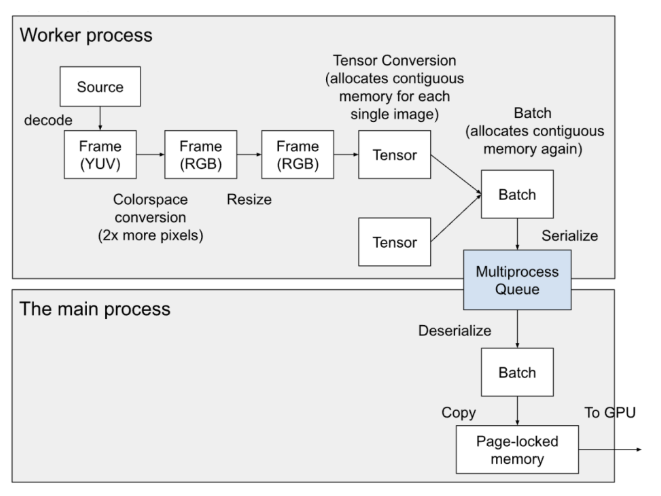Today, with the rapid development of artificial intelligence, efficient data loading is crucial for model training. Traditional solutions often result in idle GPUs, extending training times and increasing costs. SPDL (Scalable and Efficient Data Loading) launched by Meta AI aims to solve this bottleneck problem and bring significant improvements to AI training.
In today's artificial intelligence field, training models is not only about designing better architectures, but also requires high management of data. Modern AI models require large amounts of data, and this data must reach GPUs and other accelerators quickly.
However, traditional data loading systems often fail to meet this demand, resulting in idle GPUs, extended training times, and increased costs. This problem is particularly prominent when extending or processing multiple data types.

To solve these problems, Meta AI developed SPDL (Scalable and Efficient Data Loading), a tool designed to improve the transfer of AI training data. SPDL uses threaded loading, which is different from the traditional process-based method and significantly improves the data transfer speed. Whether ingesting data from the cloud or on-premises systems, SPDL integrates seamlessly into training workflows.
SPDL is designed with scalability in mind and can run on distributed systems, so whether it is a single GPU training or large-scale cluster training, SPDL can provide support. It is compatible with widely used AI frameworks such as PyTorch, lowering the threshold for use by teams. Also, as an open source tool, anyone can take advantage of or contribute to its improvements.
The core innovation of SPDL is its threading architecture. By using threads instead of processes, SPDL avoids the communication overhead common in traditional data transfers. It also uses smart technologies such as prefetching and caching to ensure that the GPU can always obtain prepared data, thereby reducing idle time and improving the overall efficiency of the system.
Benefits of SPDL include:
1. Faster data transfer speed: Able to quickly transfer data to the GPU to avoid delays caused by slow speeds.
2. Shorter training time: Keep the GPU busy, thereby shortening the overall training cycle.
3. Reduce costs: Reduce the computational costs required for training by improving efficiency.
Meta AI has conducted extensive benchmark testing, and the results show that SPDL improves data throughput by 3-5 times compared to traditional data loaders. This means that for large AI models, training time can be reduced by up to 30%. SPDL is particularly suitable for processing high-throughput data streams and can perform well in application scenarios with real-time processing or frequent model updates. Currently, Meta has applied SPDL in its reality laboratory, involving projects such as augmented reality and virtual reality.
As the demand for AI systems continues to increase, tools like SPDL will be critical to keeping the infrastructure running efficiently. By alleviating data bottlenecks, SPDL not only improves training efficiency but also opens the door to new research possibilities.
Details: https://ai.meta.com/blog/spdl-faster-ai-model-training-with-thread-based-data-loading-reality-labs/
Code entrance: https://github.com/facebookresearch/spdl
Highlights:
✅ **Improve data transmission efficiency**: SPDL adopts threaded loading, which significantly speeds up data transmission.
✅ **Shorten training time**: Compared to traditional methods, training time can be shortened by up to 30%.
✅ **Open Source Tools**: SPDL is an open source project that anyone can use and participate in improving.
All in all, SPDL provides an efficient and scalable solution to solve the data loading bottleneck in AI model training. Its open source feature also facilitates the participation of more researchers and developers to jointly promote the development of artificial intelligence technology. Hope more people will try and contribute to this project.